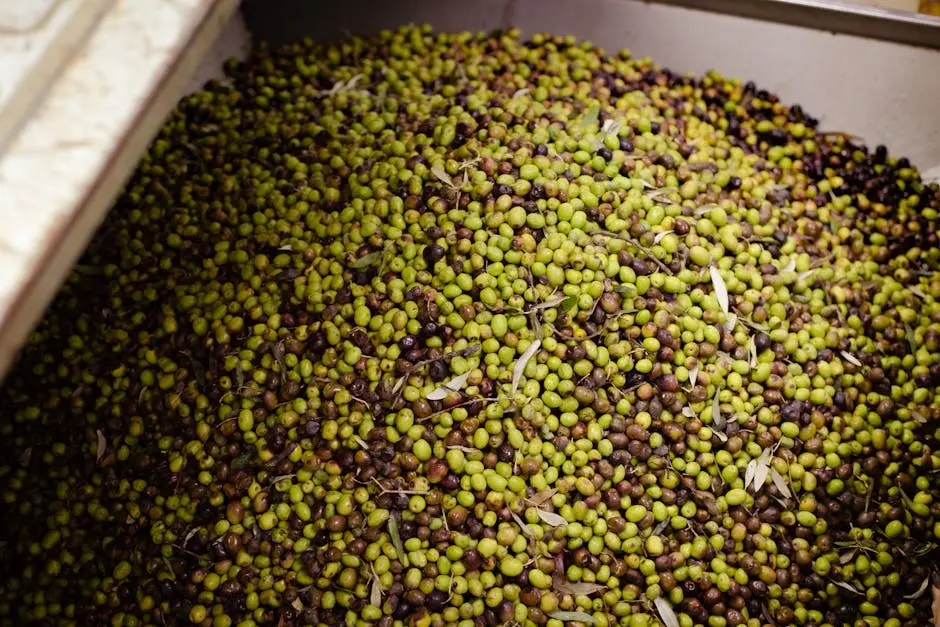How Does the Harvesting Process Affect the Quality of First-Press Olive Oil?
Delve into the intricate world of first-press olive oil and uncover how the harvesting process shapes its ultimate quality. From the groves to your table, every step in production can influence the richness and flavor of this liquid gold.
Impact of Harvest Timing
The timing of olive harvest plays a pivotal role in determining the quality of first-press olive oil. Harvesting too early can lead to underripe olives, resulting in oil that lacks flavor complexity and depth. Conversely, delaying the harvest risks overripe fruit, producing oil with higher acidity levels. Achieving the perfect balance is a meticulous art that skilled farmers master through generations of experience.
During the early stages of harvest, the olives are greener, producing oil with a more robust and peppery flavor profile. As the season progresses, the olives ripen, offering a smoother and fruitier taste. The choice of harvest timing not only impacts the oil's sensory attributes but also influences its chemical composition, affecting its shelf life and culinary versatility.
The weather conditions during the harvesting period further complicate the decision-making process. Rainfall, temperature fluctuations, and sunlight exposure all contribute to the olives' maturation rate. Farmers must navigate these environmental factors to ensure optimal harvest timing, preserving the integrity and quality of the first-press olive oil.
In conclusion, the harvest timing stands as a critical factor in the quality equation of first-press olive oil, reflecting the delicate balance between fruit maturity, flavor development, and oil stability. Understanding and respecting the nuances of harvest timing is essential in crafting exceptional olive oil products.
Influence of Harvesting Methods
The choice of harvesting methods can significantly impact the quality and characteristics of first-press olive oil. Traditional handpicking, though labor-intensive, allows for selective harvesting of ripe fruit, ensuring premium oil quality. Mechanical harvesting, on the other hand, offers efficiency but may result in mixing fruits of varying ripeness levels, compromising the final product's taste and aroma.
Handpicking olives is an age-old practice that minimizes damage to the fruit and preserves the integrity of the oil. This meticulous method ensures that only the highest-quality olives make their way into the press, enhancing the oil's purity and distinct flavor profile. In contrast, mechanical harvesting can be quicker but requires careful calibration to avoid altering the oil's sensory attributes.
Furthermore, the harvesting method directly influences the overall production costs and resource allocation. While handpicking may be more expensive due to intensive labor requirements, the resulting oil's superior quality justifies the investment. Mechanical harvesting offers scalability but demands precision to maintain quality standards throughout the process.
In summary, the choice between traditional handpicking and modern mechanical harvesting is a crucial decision that impacts the essence of first-press olive oil. Balancing craftsmanship with efficiency, farmers must consider the long-term effects of their harvesting methods on the oil's flavor, aroma, and market competitiveness.
Effects of Storage Conditions
After the olive harvest, proper storage conditions are vital to preserving the quality and freshness of first-press olive oil. Exposure to heat, light, and oxygen can accelerate the oil's deterioration, leading to rancidity and a loss of flavor. Adequate storage in cool, dark environments helps maintain the oil's sensory properties and extends its shelf life.
Stainless steel tanks and dark glass bottles are commonly used to store olive oil, protecting it from light exposure that can trigger oxidation. Maintaining a consistent temperature and humidity level further safeguards the oil's integrity, preventing premature aging and flavor degradation. Proper storage practices are essential in upholding the premium quality of first-press olive oil.
Consumers play a crucial role in preserving the oil's quality by storing it in a cool, dark place away from direct sunlight and heat sources. Avoiding fluctuations in temperature and minimizing air exposure through tightly sealed containers ensure that the oil retains its freshness and distinctive taste. By prioritizing proper storage conditions, individuals can fully appreciate the nuances of this culinary treasure.
In essence, the impact of storage conditions on first-press olive oil cannot be overstated. From production facilities to kitchen pantries, maintaining optimal storage environments is essential in safeguarding the oil's delicate flavors and aromas. By prioritizing quality preservation, producers and consumers alike contribute to the longevity and excellence of this premium product.
Role of Extraction Techniques
The extraction techniques employed during olive oil production significantly influence the final quality and characteristics of first-press olive oil. Cold pressing, a traditional method, involves crushing the olives without exposing them to high temperatures, preserving the oil's natural flavors and vital nutrients. This gentle process yields an oil with lower acidity levels and enhanced sensory attributes.
Modern centrifugation techniques offer faster oil extraction but may compromise the oil's quality by exposing it to higher temperatures during processing. While these methods are efficient, they can impact the oil's taste and nutritional value. Balancing speed and quality, producers must carefully select extraction techniques that align with their quality standards and product objectives.
Additionally, the extraction process plays a crucial role in separating the oil from other components, such as water and solids, to ensure purity and clarity. Properly calibrated machinery and precise control over extraction parameters are essential in maintaining consistent quality across batches. The choice of extraction technique shapes the oil's sensory profile and overall customer satisfaction.
In conclusion, the extraction techniques utilized in first-press olive oil production are a cornerstone of quality assurance. By prioritizing methods that preserve the oil's natural essence and nutritional benefits, producers uphold the traditions and standards that define exceptional olive oil products.
Unveiling the Essence of First-Press Olive Oil
As you savor the unique aroma and taste of first-press olive oil, remember the meticulous harvesting techniques and their crucial role in preserving its exceptional quality. The journey from orchard to bottle is a testament to the artistry and dedication that define this cherished product.

